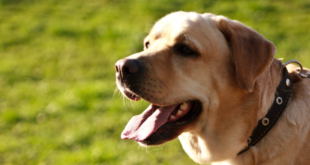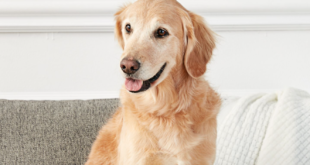Picture this: it’s a beautiful day outside, and you’re excited to take your furry friend for a walk. You clip on their leash and open the door, eager to embark on your adventure. But as soon as you step outside, your pup starts pulling – hard. Suddenly, your peaceful stroll turns into a battle of wills as you struggle to keep them under control. Sound familiar? Don’t worry; you’re not alone. Many pet owners struggle with loose leash walking, especially when it comes to puppies. But fear not, because with a little patience and practice, mastering loose leash walking is possible. In this article, we’ll explore tips and tricks for taming pulling puppies and making walks enjoyable once again.
Table of Contents
1. Understanding the Problem: Why Puppies Pull on Leashes
One of the most common issues encountered by dog owners is leash pulling. Though cute in appearance, puppies can be incredibly difficult to control once they get excited, making walks an unpleasant and stressful experience. But why do puppies pull on leashes?
- Instincts: Pulling is a natural behavior for dogs, as it is linked to their predatory instincts. Dogs are attracted to movement and smells, which makes it hard for them to resist exploring their environment. Puppies are especially curious and excitable, which makes it tough for them to stay calm on a leash.
- Lack of Training: Young puppies are new to the world and have no idea how they are supposed to behave. They need guidance, training, and reinforcement to learn how to properly walk on a leash. Without early training, puppies will continue to pull on the leash and associate it with fun and excitement.
- Lack of Exercise: Puppies have a lot of energy and need to exercise regularly to stay healthy and happy. Without enough physical activity, puppies can become restless and develop bad behaviors – including leash pulling. Dogs need to release their energy, and walks can provide a fun outlet for them to burn off excess energy.
In conclusion, leash pulling is a common problem faced by many dog owners. It is important to understand why puppies pull on leashes in order to address the issue properly. With patience, training, and lots of exercise, puppies can learn to walk calmly on a leash and enjoy their daily walks with their owners.
2. Equipping Yourself with the Right Tools: Choosing the Best Leash for Your Puppy
When it comes to choosing a leash for your puppy, there are a few factors to consider. These include the material, length, and type of leash. Here are some tips to assist you in making the appropriate selection for your furry friend.
Firstly, you should consider the material of the leash. A nylon leash is comfortable and can stand up to regular use, but a leather leash may feel more durable and comfortable in your hands. If you have a large breed, a leather leash may be a better option.
The length of the leash is another factor to consider. A six-foot leash is preferred for training purposes, and a shorter leash is better for walking and controlling your dog in busy areas. In contrast, a longer leash provides your pup with more freedom of movement while still keeping him safe, and is ideal for exercising in open spaces.
Finally, picking the proper style of the leash is essential. A standard leash may suffice, but a retractable leash can be beneficial for your pup to explore the environment safely while still being under your control. Therefore, it is essential to know and study thoroughly all the leash types before purchasing one.
In conclusion, choosing a leash can have a significant impact on your dog’s walking experience. As a result, you should choose a leash that is not only comfortable and safe but also suitable for your pup’s needs. Take the time to consider the material, length, and style of leash that is best for your puppy so that you can both enjoy your walks together.
3. Techniques for Success: Tried-and-Tested Methods for Teaching Loose Leash Walking
One successful technique for teaching loose leash walking is the “Stop and Go” method. This involves starting to walk with your dog on a loose leash, and when they start to pull, you stop walking completely. Once your dog stops pulling and returns to a slack leash, you can resume walking. If they start to pull again, simply stop and repeat the process. This teaches your dog that pulling on the leash will not get them where they want to go and that walking with a slack leash is rewarded.
Another technique is the “U-Turn” method. This involves turning around and walking in the opposite direction when your dog starts to pull on the leash. Once they catch up and the leash is slack, you can turn back around and continue walking in the original direction. This teaches your dog to stay close and pay attention to you while walking, as well as reinforcing the idea that pulling will not get them where they want to go.
Lastly, using positive reinforcement techniques can be very effective in teaching loose leash walking. This can include offering treats or praise when your dog is walking calmly on a loose leash, or stopping to give them attention when they come back to you and the leash is slack. Consistency and patience are key when using these methods, as it may take some time for your dog to understand and adjust their behavior. By using these tried-and-tested techniques, you can successfully teach your dog to walk calmly on a loose leash.
4. Consistency is Key: Creating a Regular Training Schedule for Your Puppy
One of the most important things you can do when training your puppy is to create a consistent training schedule. This will help your puppy know what is expected of them and will create a routine that they can rely on. Here are some tips to help you create a regular training schedule for your puppy:
- Set specific times for training: This will help you stay on track and will give your puppy a routine to follow.
- Make training sessions short and sweet: Puppies have short attention spans, so keep your training sessions to no more than 10-15 minutes at a time.
- Be consistent with your rewards: Use positive reinforcement to reward good behavior and ignore bad behavior. This will help your puppy learn what is expected of them.
- Practice every day: Consistency is key when training a puppy, so practice every day to reinforce good habits and behaviors.
Remember, creating a regular training schedule for your puppy takes time and patience, but it will pay off in the long run. By sticking to a routine and rewarding good behavior, you’ll be helping your puppy become a well-behaved and obedient companion.
5. Celebrating Success: Rewarding Your Puppy for Progress Made in Mastering Loose Leash Walking
Once your puppy starts to master loose leash walking, it is important to celebrate their success and reward them for their progress. Positive reinforcement is the most effective way to teach your puppy new skills, so make sure to take the time to reward them for their achievements.
One way to reward your puppy is through verbal praise. When they are walking properly on the leash, use a happy and upbeat tone to tell them that they are doing a great job. Saying things like “good job” or “you’re such a good walker” will reinforce their behavior and encourage them to keep it up.
Another way to reward your puppy is through treats. Make sure to use small, bite-sized treats that you can easily give to your puppy while walking. Every time they successfully walk on a loose leash, give them a treat and praise them for their good behavior. This will help your puppy associate loose leash walking with positive experiences and make it more likely that they will continue to behave properly on the leash.
So there you have it, the secret to mastering loose leash walking with your puppy! Training your pup is always a work in progress, but with the right techniques, you’ll have ahead start when it comes to teaching your little four-legged furball to resist the urge to go exploring – all while keeping those pesky leash pulls to a minimum. And good luck – happy training!
 Treat For Dog – Brain Training for Dogs, Dog Training & Obedience Discover Treat For Dog and get your pup on the path to smarter, happier, and healthier living with brain training for dogs.
Treat For Dog – Brain Training for Dogs, Dog Training & Obedience Discover Treat For Dog and get your pup on the path to smarter, happier, and healthier living with brain training for dogs.




